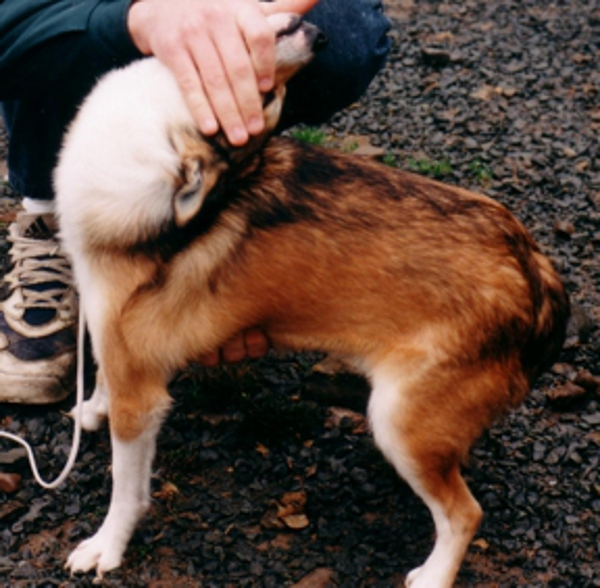
We all think our respective breeds are unique – and they are – but we doubt anyone would contest how extraordinarily unique the Norwegian Lundenhund is. We’ve touched upon the breed’s feet and ears in other posts, but here, we want to mention their necks. This study in canine evolution has a double-jointed neck at the nape that is so flexible, it can turn its head 180º to either side, and bend backwards to touch its forehead to its own spine. This anatomical adaptation was extremely useful when the dog needed to reverse itself, or turn around in narrow cave passageways leading to his prey, the Puffin bird. Only the reindeer has similar flexibility in its neck and upper spine. We have tried and tried to find physiological evidence of what is actually going on with this dog when it bends his head straight backwards, nor have we been able to find out what exactly is going on with the Lundehund’s joints, but it’s clear that something unique is happening to allow for such unusual joint mobility. The spine is flexible which allows the dog to bend his neck backwards, touching his forehead on his back. The forelegs can be held out at a 90 degree horizontal angle to the body which allows the dog to lay flat on his stomach. This flexibility is what makes it possible for the dog to squirm through tight twisting tunnels. The only other mammal with an equally flexible neck is the reindeer.
Lundehund friends, if you have more scientific information about your breed’s unique range of motion, we’d love to hear from you.
Photo found on Pinterest and happily credited upon receipt of information

I met a couple Lundehunds last week at a doggie fun day! They were amazing! And these ones were very laid back, not hyper and in your face OR shy and fearful. I just loved them, and so did my dog! The woman who had them is planning to have a litter soon. I would love this breed but doubt I could deal with the health issues (emotionally and financially).
Cool! Not quite right, but cool. 🙂
LOL, we know the feeling, Barbara. Have you seen the Lundehund’s FEET?
Thank you for your report! Pic shows my A-litter. 😉
Marie-Christine, they’re adorable!!! Can you shed any light into the structure of the breed that allows it such incredible elasticity?
Lundehunds do not have a double jointed neck. They do have a less pronounced ridge on the atlas vertebra, which does not hit the occipital bone at the back of the scull as it would in other dogs. Likewise, their shoulders are not double-jointed. They just have a wider range of motion which would have helped the dogs maneuver and turn around when going underground to retrieve puffin birds. Every unique aspect of the breed can be attributed to their specialized function and adaptation to a marginal Arctic island environment.
Thank YOU, Jason! And thank you for posting your answer here where it will be available to be seen forever! We knew the “why” of the breed’s specialized range of motion, but not the physiology of it. Thanks again!
My dog is a cross neapolitan mastiff, and she has both traits mentioned , she can sit with her back to you and bend her neck back to look at you. She can also lay flat on her stomach
Wow!
My Weimaraner does this all the time 😳…. I was honestly a bit worried, she does this all the time!
My pup, a mixed breed, has the same trait. Does this all the time — sometimes he takes that position while he sleeps.
Photo taken while he was playing with his toy.